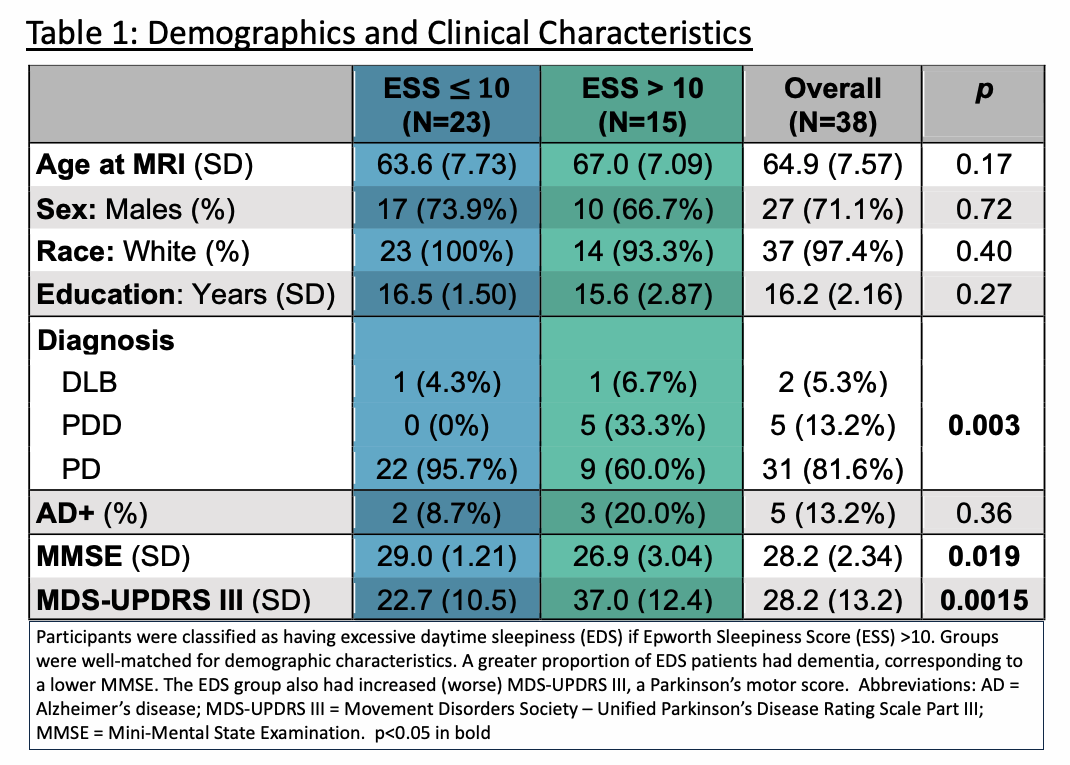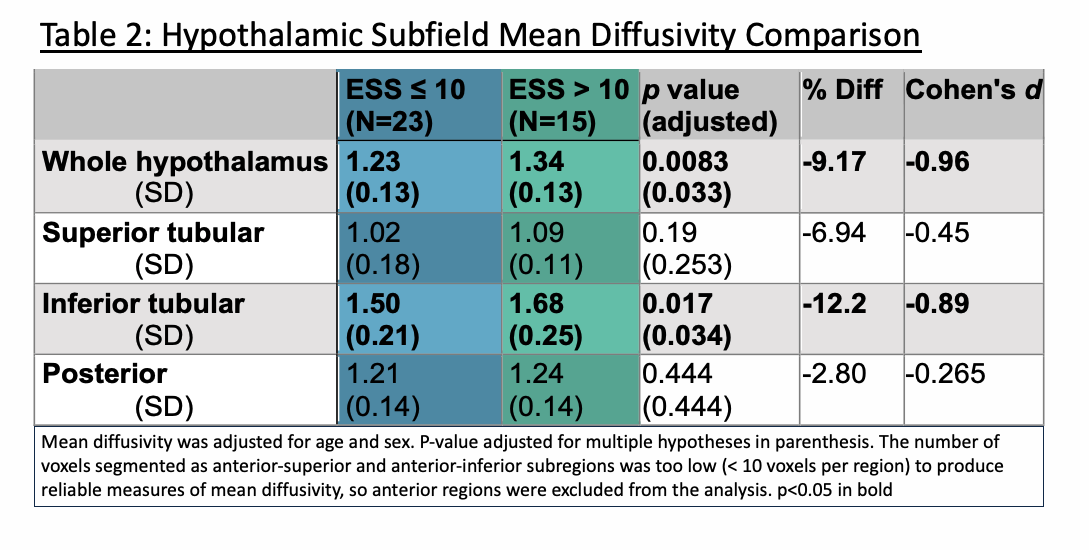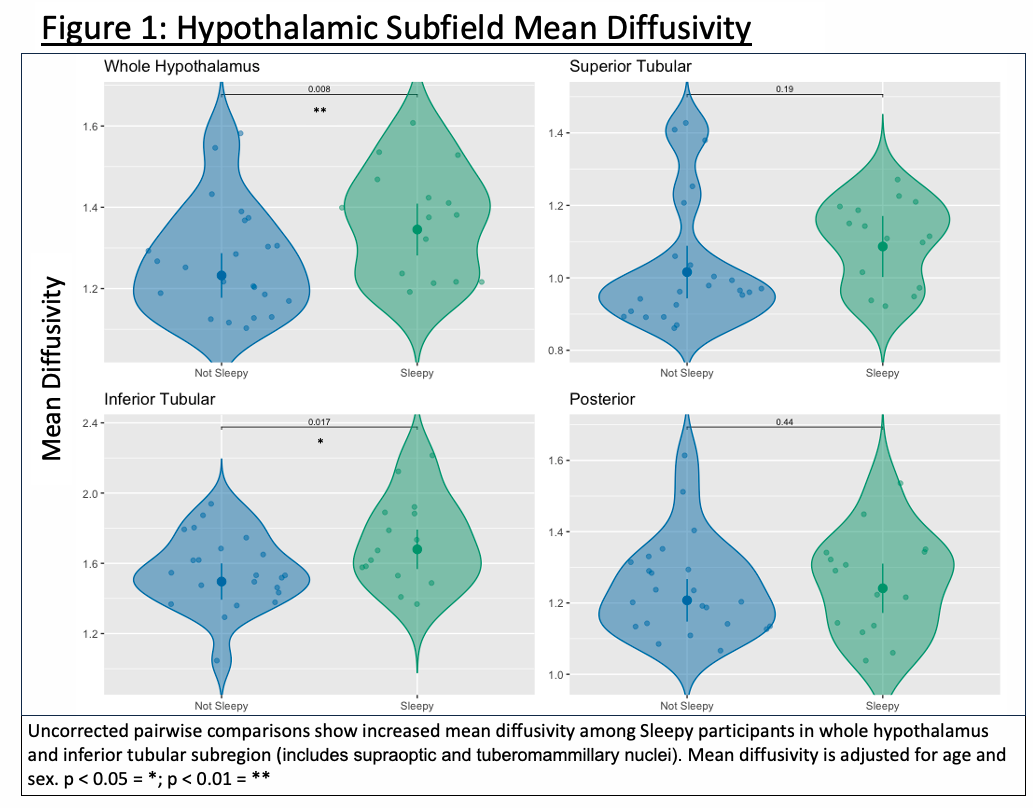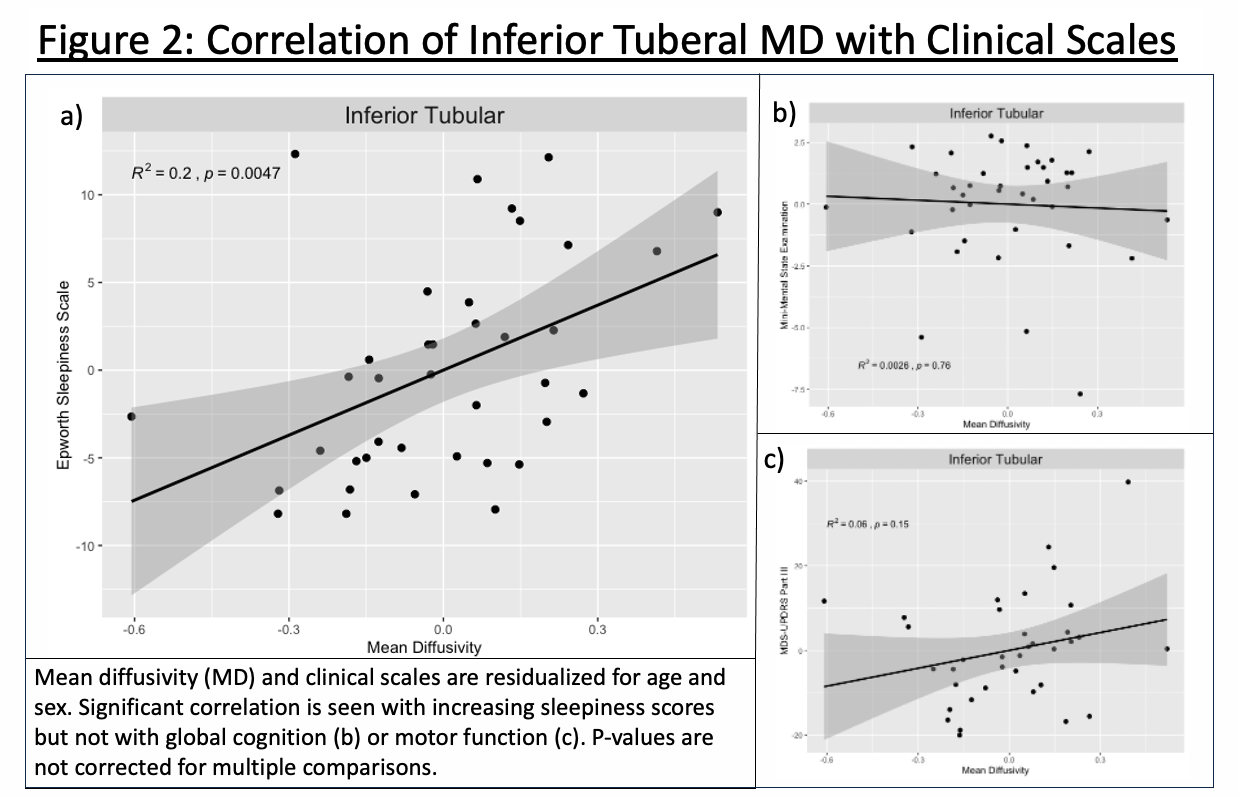Category: Parkinson's Disease: Neuroimaging
Objective: Identify neuroimaging correlates of excessive daytime sleepiness in Lewy body disorders using diffusion MRI.
Background: Excessive daytime sleepiness (EDS) is a common and disabling symptom for patients with Lewy body disorders (LBD), and effective treatments are limited. The hypothalamus is a key regulator of the sleep-wake state, but it’s contribution to EDS in LBD is poorly understood. Here, we use MRI microstructural measures to evaluate the relationship of subregion-specific hypothalamic degeneration to EDS symptoms in LBD.
Method: We studied 38 patients with clinical diagnoses of LBD (Parkinson’s disease, n = 31; Parkinson’s disease dementia, n = 5; and Dementia with Lewy bodies, n = 2) with available MRI and Epworth Sleepiness Scale (ESS). Patients were classified as having EDS if ESS >10. Hypothalamic subfields were segmented using an automated pipeline (FreeSurfer) and mean diffusivity (MD) was calculated within segments. MD was compared between EDS and non-EDS groups, covarying for age and sex.
Results: Mean diffusivity was increased in the EDS group in the inferior tuberal subregion (includes supraoptic and tuberomammillary nuclei) (β=0.183, p = 0.017) and in the whole hypothalamus (β=0.113, p = 0.008); no difference was seen in the superior tuberal (includes paraventricular nucleus) or posterior (includes mammillary body and tuberomamillary nucleus) subregions.
Conclusion: Daytime sleepiness symptoms are associated with increased mean diffusivity in the inferior tuberal hypothalamus in an LBD cohort. This suggests that degeneration within this region, which includes the wake-promoting tuberomammillary nucleus, could contribute to EDS symptoms. Future work will characterize differences in white matter connectivity between the hypothalamus and subcortex/cortex in EDS and non-EDS LBD patients. Identification of brain networks underpinning EDS symptoms in LBD could direct future non-invasive brain stimulation therapies.
*Previously presented at University of Pennsylvania Chronobiology and Sleep Institute Research Retreat 10/17/23
Table 1: Demographics and Clinical Characteristics
Table 2: Hypothalamic Subfield Mean Diffusivity
Figure 1: Hypothalamic Subfield Mean Diffusivity
Figure 2: Inf. Tuberal MD Clinical Correlation
To cite this abstract in AMA style:
J. Cohen, H. Radhakrishnan, C. Olm, S. Das, P. Cook, D. Wolk, D. Weintraub, D. Irwin, C. Mcmillan. Microstructural Changes in the Inferior Tuberal Hypothalamus Correlate with Daytime Sleepiness in Lewy Body Disease [abstract]. Mov Disord. 2024; 39 (suppl 1). https://www.mdsabstracts.org/abstract/microstructural-changes-in-the-inferior-tuberal-hypothalamus-correlate-with-daytime-sleepiness-in-lewy-body-disease/. Accessed December 19, 2025.« Back to 2024 International Congress
MDS Abstracts - https://www.mdsabstracts.org/abstract/microstructural-changes-in-the-inferior-tuberal-hypothalamus-correlate-with-daytime-sleepiness-in-lewy-body-disease/




